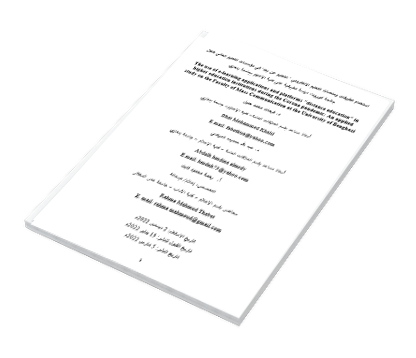The use of e-learning applications and platforms "distance education" in higher education institutions during the Corona pandemic: An applied study on the Faculty of Mass Communication at the University of Benghazi
DOI:
https://doi.org/10.37376/tljmr.vi2.2057Keywords:
: use - platforms - applications - e-learning - higher education - coronaAbstract
This study aimed to identify the most commonly used applications and e-learning platforms "distance education" during the period of ban and closure of educational institutions, including the Faculty of Media at the University of Benghazi under study. The ban period, which lasted for an entire semester, monitored the pros and cons of using electronic platforms and applications in distance education, and researchers used the media survey method to conduct this study, and this study was conducted on the faculty members of the college under study. 75) While a relative, stratified sample was drawn from the students enrolled in the second semester during the academic year 2020/2021, amounting to 650 male and female students, and through the sampling table, the sample size was determined by 230 individuals distributed in specializations. This study reached several results, the most important of which were: The Telegram channel is the most used in distance e-learning from the students' point of view, followed by the Zoom application, then the Facebook and WhatsApp applications, while mentioning any use of other educational applications and platforms.
The combination of theoretical and practical methods, and opening the door for discussion during virtual lectures, is the most widely used mechanism in distance e-learning. Also, saving effort and time, learning how to deal with modern technology, and giving them the opportunity to demonstrate their skill and self-reliance in dealing with information sources One of the most important advantages of using electronic platforms and applications in distance education. The incompatibility of remote study with some subjects that require a practical aspect, and the constant power cuts are among the first difficulties that students encountered while receiving their remote lectures. The study showed, through the viewpoint of the faculty members, that there is a somewhat difference in the final results of student achievement in favor of traditional education
Downloads









